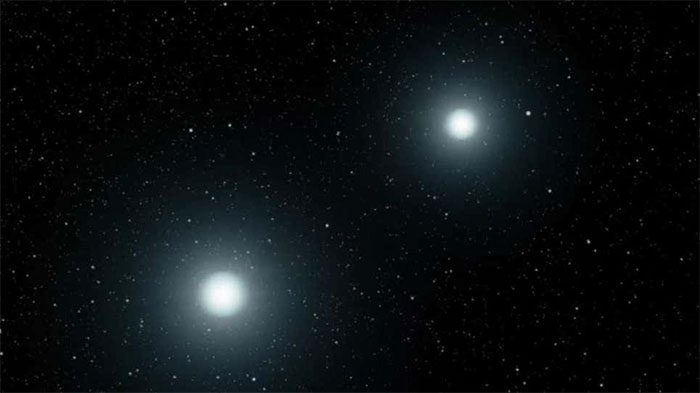A New Study by International Scientists Sheds Light on White Dwarfs That Could Destroy the Solar System.
According to a post on April 9 in the journal of the Royal Astronomical Society (MNRAS), scientists from the University of Warwick (UK) and several other universities have studied the impact of white dwarfs – stars that have exhausted their fuel – on planetary systems like our Solar System.
Previous studies have indicated that when asteroids, moons, and planets approach white dwarfs, the immense gravitational force of these dense stars tears these smaller planets apart into increasingly smaller fragments. These fragments continue to collide and eventually get crushed into dust.

Two white dwarfs in the process of stellar merger. (Illustration: NASA)
The new study posits that the “killer” white dwarf could “destroy” Earth, which was once part of our Solar System. When the Sun “dies” and transforms into a white dwarf, it could “devour” or “tear apart” the Earth. The remainder of our Solar System, including asteroids located between Mars and Jupiter, as well as Jupiter’s moons, could also face a similar fate when the Sun becomes a white dwarf. However, even if Earth survives longer than the Sun, our planet will no longer be suitable for life.
To understand what might happen to asteroids, moons, and planets that come close to white dwarfs, the research team investigated changes in the brightness of stars over 17 years, focusing on three white dwarfs that exhibit different behaviors: ZTF J0328-1219, ZTF J0923+4236, and WD 1145+017. Their findings revealed that the fate of these objects could be extremely catastrophic as they approach the stars.
They reached this conclusion after analyzing the “variability” of asteroids, moons, and planets – the dimming of stars caused by objects passing in front of them. Unlike the predictable “variability” caused by planets orbiting stars, the “variability” caused by debris appears strange, chaotic, and disordered.
Professor Boris Gaensicke from the University of Warwick noted the surprising yet straightforward fact that fragments of asteroids, which could be moons or even planets orbiting a white dwarf, can be detected every few hours. However, his research indicates that the movement and collision processes can evolve rapidly within just a few years. According to Professor Gaensicke, while he and his colleagues believe they are on the right track, the fate of these systems is much more complex than they could have imagined.
The lead researcher, Dr. Amornrat Aungwerojwit from Naresuan University in Thailand, stated that the processes and outcomes of these collisions provide a basis for researchers to determine the types of materials that formed the original planets.


















































